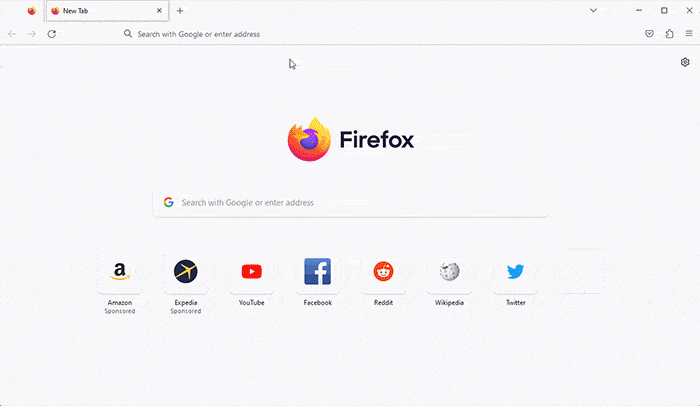Firefox's has been reimagined in 2023 to be fast, modern and inviting the first time you run it and every day after. We've always had your back on privacy, and still do. We think the browser should be a piece of software you can rely on to have your back, pleasant to look at and working seamlessly with the web.
Is Firefox a trustworthy browser?
Firefox is considered a secure and private browser. By default, Firefox blocks known third party trackers, social media trackers, cryptomining scripts and fingerprinters from collecting your data.
Does Firefox use Google as a search engine?
Yes, Google pays hefty royalties to Mozilla/Firefox for making them the default search engine in Firefox. That deal is worth around $400 million per year (as of 2021-2022) and makes up the vast majority of Mozilla's total revenue.
Is Firefox better than Google Chrome?
Firefox and Chrome are updated every few weeks, so it's hard to compare them over time. At one point, Firefox has offered advantages over Chrome in terms of RAM usage, but that claim can go back and forth depending on the revision (and the potential for regressions). Microsoft Edge and Apple's Safari have also made such claims, but in general all browsers are continually improving and beating each other.
Firefox does offer better privacy and customizability (to an extent) and is a solid browser with lots of add-ons available. If you want the best customizability on a stock browser, you should also check out Vivaldi (Chromium based).
Who owns Firefox?
Firefox is developed by the Mozilla Foundation, a US-based non-profit that operates and controls the Mozilla project.
Is Firefox based on Chromium?
No, Firefox is not based on Chromium. In fact, Firefox is one of the last major browsers that isn't. Firefox runs on its own Quantum browser engine.
Features
A sleek, clean Firefox design backed by research
Going into the Firefox redesign, our team studied how people interact with the browser, observing their patterns and behaviors. We listened to feedback and gathered ideas from regular people who just want to have an easier experience on the web. We obsessed over distractions, extra clicks and wasted time. The resulting new design is simple, modern and fast and delivers a beautiful experience to support what people do most in Firefox.
Streamlined toolbar and menus
The toolbar is naturally where you start every web visit. It's the place where you type a URL to go somewhere online. After web page content, it's what you look at most in Firefox. The new toolbar is simplified and clutter-free so you get to the good stuff effortlessly.
Menus are where key Firefox actions and commands live. We've consolidated extra menus to reduce clutter and be more intuitive through the three bars menu in the upper right or by right-clicking to activate it on your computer screen. The new look reorganized and streamlined our menus to put the best actions quickly at your fingertips.
When privacy protections are engaged in Firefox, the shield icon in the toolbar glows subtly indicating that we're working behind the scenes to protect you from nosy trackers. Fun fact: Firefox has blocked more than 6 trillion --- that's trillion with a T --- trackers since we rolled out enhanced tracking protection, stopping thousands of companies from viewing your online activity.. We're talking about tracking cookies, social media trackers, fingerprinters, cryptominers and more. Go ahead and click on the shield to see who and what Firefox is blocking... you might be surprised by what you find out.
A new look for tabs
Based on our research, we found out that more than half of you have 4+ tabs open all the time, and some of you have more, a lot more. And we feel that! Tab as much as you like, friends. Tabs got a makeover so they are now gently curved and float above the toolbar. It's an exciting change that also serves as a reminder that tabs aren't stationary. So grab those tabs, move them around and organize them as you like. Tabs also got a glow-up to be a touch brighter when active.
Shhhhhh... notifications
No one likes to be interrupted when they're in the flow, but if you must be alerted to something, at least it can look good. We've updated notifications and alerts of all kinds in Firefox to take up less space for less jarring interruptions. Plus, non-essential alerts and messages have been removed altogether. Media autoplay is turned off by default, so you won't be interrupted by a random video blasting unexpectedly. Spotting a noisy tab is easy, and unmuting/muting takes just a quick click on the tab itself.
Expanded privacy protections
Mozilla makes it our mission to put your privacy and security first in the technology we develop. Our goal is for you to worry less every time you go online. The latest Firefox release comes to you with next-level security and privacy that you've come to expect from us.
The best private browsing mode out there
All browsers have a private browsing mode, but none match Firefox. The popular Total Cookie Protection moves from the optional strict setting to always-on in private browsing. This feature maintains a separate "cookie jar" for each website you visit while browsing privately. Any time a site deposits a cookie, Firefox locks it up in its own cookie jar so that it can't be shared with any other website.
An even better Firefox for iOS and Android
The fresh new look covers Firefox everywhere, from desktop browsers to Android and iOS mobile devices. The iOS experience is optimized for iPhone and iPad, with key actions now taking fewer steps for quicker searches, navigation and tab viewing. With refinements in iconography and menu names, the whole browsing experience is more cohesive and harmonious across every platform.
Shape Up Your Floats
CSS Shapes lets a floated element sculpt the flow of content around it beyond the classic rectangular bounding box we've been constrained to. For instance, in the above screenshot and linked demo, the text is wrapping to the shape of the grapes vs the image's border. There are properties for basic shapes all the way up to complex polygons.
You can learn more in Josh Marinacci's post on the new CSS Shapes tooling from yesterday.
Variable Fonts Are Here
No punny title, I'm just excited! OpenType Font Variations allow a single font file to contain multiple instances of the same font, encoding the differences between instances. In addition to being in one file, font creators can expose any number of variation axes that give developers fine-grained control on how a font is rendered. These can be standard variations like font weight (font weight 536 looks right? no problem!) or things that were never previously available via CSS (x-height! serif-size!). In addition to the candy-store possibilities for typography nerds, being able to serve a single file with multiple variants is a major page weight savings. Dan Callahan goes much deeper on the grooviness to be found and how Firefox makes it easy to tweak these new custom values.
What's New
New
- Say hello to enhanced Picture-in-Picture! Rewind, check video duration, and effortlessly switch to full-screen mode on the web's most popular video websites.
- Firefox's address bar is already a great place to search for what you're looking for. Now you'll always be able to see your web search terms and refine them while viewing your search's results - no additional scrolling needed! Also, a new result menu has been added making it easier to remove history results and dismiss sponsored Firefox Suggest entries.

- Private windows now protect users even better by blocking third-party cookies and storage of content trackers.
- Passwords automatically generated by Firefox now include special characters, giving users more secure passwords by default.
- Importing bookmarks from Safari or a Chrome-based browser? The favicons for those bookmarks will now also be imported by default to make them easier to identify.
- Firefox 113 now supports AV1 Image Format files containing animations (AVIS), improving support for AVIF images across the web.
- The Windows GPU sandbox first shipped in the Firefox 110 release has been tightened to enhance the security benefits it provides.
- A 13-year-old feature request was fulfilled and Firefox now supports files being drag-and-dropped directly from Microsoft Outlook. A special thanks to volunteer contributor Marco Spiess for helping to get this across the finish line!
- Users on macOS can now access the Services sub-menu directly from Firefox context menus.
- On Windows, the elastic overscroll effect has been enabled by default. When two-finger scrolling on the touchpad or scrolling on the touchscreen, you will now see a bouncing animation when scrolling past the edge of a scroll container.
- Firefox is now available in the Tajik (tg) language.
Firefox 113 introduces a redesigned accessibility engine which significantly improves the speed, responsiveness, and stability of Firefox when used with:
- Screen readers, as well as certain other accessibility software;
- East Asian input methods;
- Enterprise single sign-on software; and
- Other applications which use accessibility frameworks to access information.
Fixed
- Various security fixes.
Changed
- The long-deprecated mozRTCPeerConnection, mozRTCIceCandidate, and mozRTCSessionDescription WebRTC interfaces have been removed. Sites should utilize the non-prefixed versions instead.
Previous release notes
New
- Right-clicking on password fields now shows an option to reveal the password.
- Ubuntu Linux users can now import their browser data from the Chromium Snap package. Currently, this will only work if Firefox is not also installed as a Snap package, but work is underway to address this!
- Do you use the tab list panel in the tab bar? If so, you can now close tabs by middle-clicking items in that list.
- You've always been able to un-close a tab by using (Cmd/Ctrl)-Shift-T. Now, that same shortcut will restore the previous session if there are no more closed tabs from the same session to re-open.
- For all ETP Strict users, we extended the list of known tracking parameters that are removed from URLs to further protect our users from cross-site tracking.
- Enables overlay of software-decoded video on Intel GPUs in Windows. Improves video down scaling quality and reduces GPU usage.
- The deprecated U2F Javascript API is now disabled by default. The U2F protocol remains usable through the WebAuthn API. The U2F API can be re-enabled using the security.webauth.u2f preference.
Fixed
- Various security fixes.
Changed
- The deprecated U2F Javascript API is now disabled by default. The U2F protocol remains usable through the WebAuthn API. The U2F API can be re-enabled using the security.webauth.u2f preference.
Web Platform
- Clear button, newly added to the date picker panel, allows users to quickly clear the input with type date or datetime-local and provides a familiar experience across browsers.



